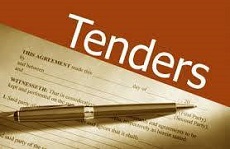
Contractors, when looking for work, will often need to provide a tender document in order to secure the contract. Your tender response is of critical importance and makes the difference between you getting the job and not getting it.
We are going to take you through all the steps that construction contractors should follow when creating a tender. Firstly, when you receive the relevant documentation, read through it thoroughly and make sure you understand everything before drafting a response. You should also raise any questions you have with the buyer. It is better to seek clarification, as opposed to misunderstanding something that is written in the tender document.
Once you are fully aware of what is expected of you, you should put a timeline together for completing your response to the tender. You should also consider whether anyone is going to be able to assist you, such as one of your colleagues.
Make certain your online tenders are always reader-friendly and that it is not filled with complicated jargon that their evaluation team is going to struggle to comprehend. Next, provide proof of relevant experience, and ensure that you answer all of the questions they have asked. Ask yourself how you are going to make it easy for the buyer to award the contract to your company. Finally, get a fresh pair of eyes to proofread the response, and always plan to submit the document a day or two before the deadline.
Pricing for Work
Contractors will need to put together a proposal document if they have received an invitation to tender. There are a lot of different factors that need to be considered concerning this. One thing that you will need to give careful thought to is the price you set.
Setting the price for work is a lot easier said than done. You need to show value for money, but you also need to ensure that you achieve full cost recovery. It is a good idea to take the time to see what other contractors charge for similar jobs. Also, make sure you allow for all costs, including the likes of travel. While it can be tempting to undercharge in order to secure the contract, you are only going to hurt yourself in the long run.
You may want to think about making an application for a contingency allowance to the price, which allows for cost variations. This is suitable for situations whereby, for example, the cost of a component raw material has the capacity to vary significantly throughout the duration of the contact. If you are going to ask for a contingency allowance, make sure you give a thorough explanation as to why you want one.
Also, if you are specifying the price for a contract that is going to take place over a number of years, make sure that your prices increase slightly each year in order to accommodate inflation. You will need to calculate the time spent on the project in order to determine an accurate price. This includes the time spent traveling in relation to the project, meetings, and the time you incur on professional work.






